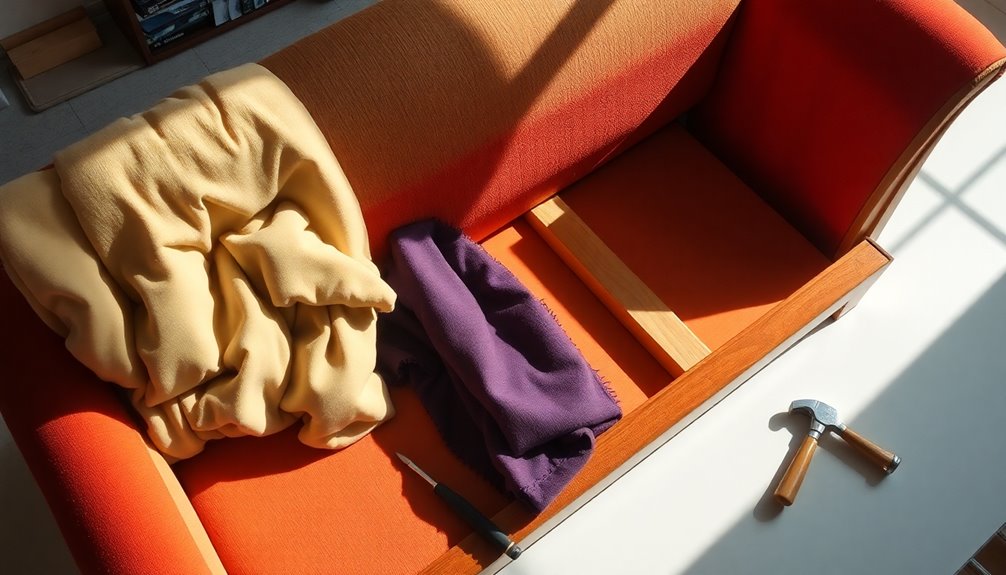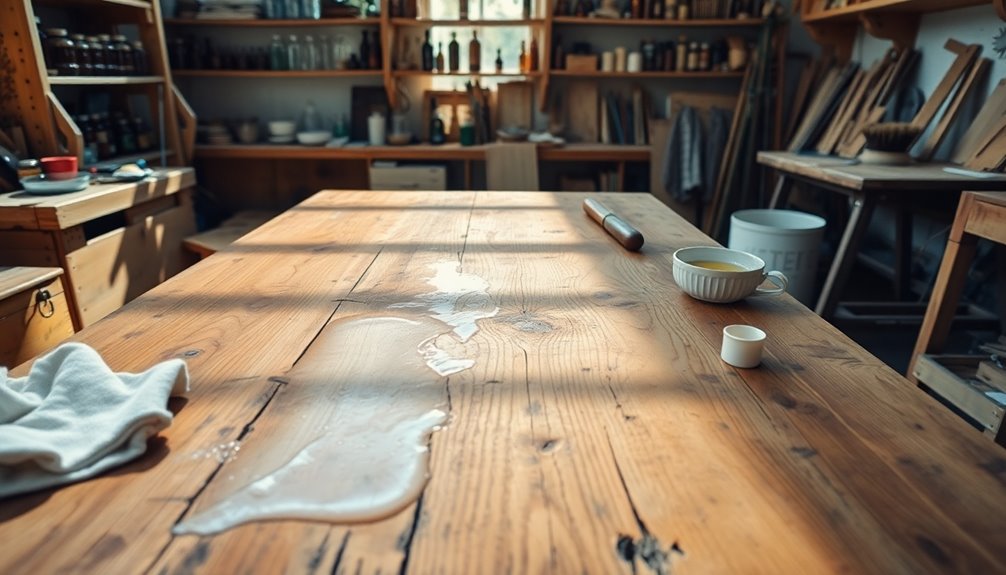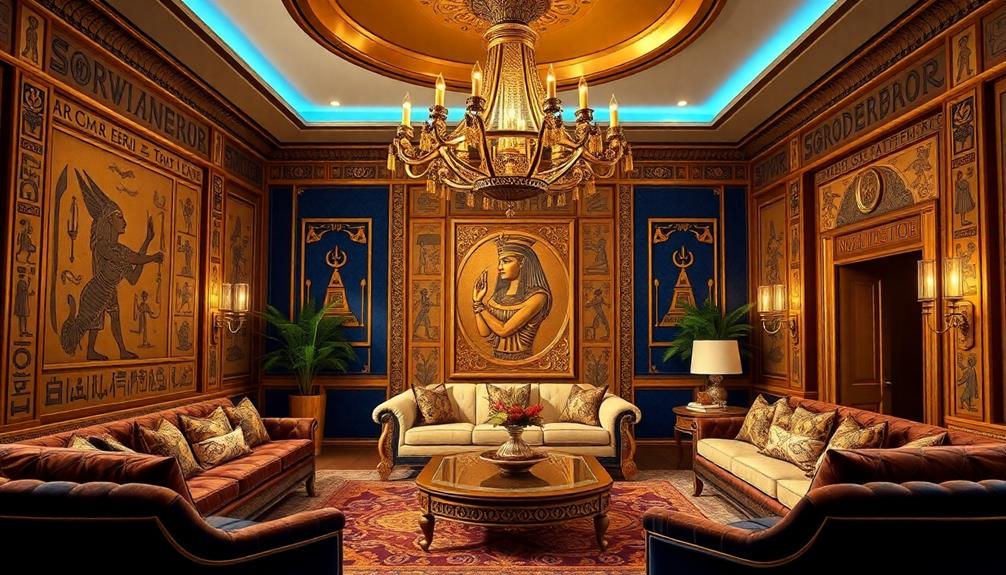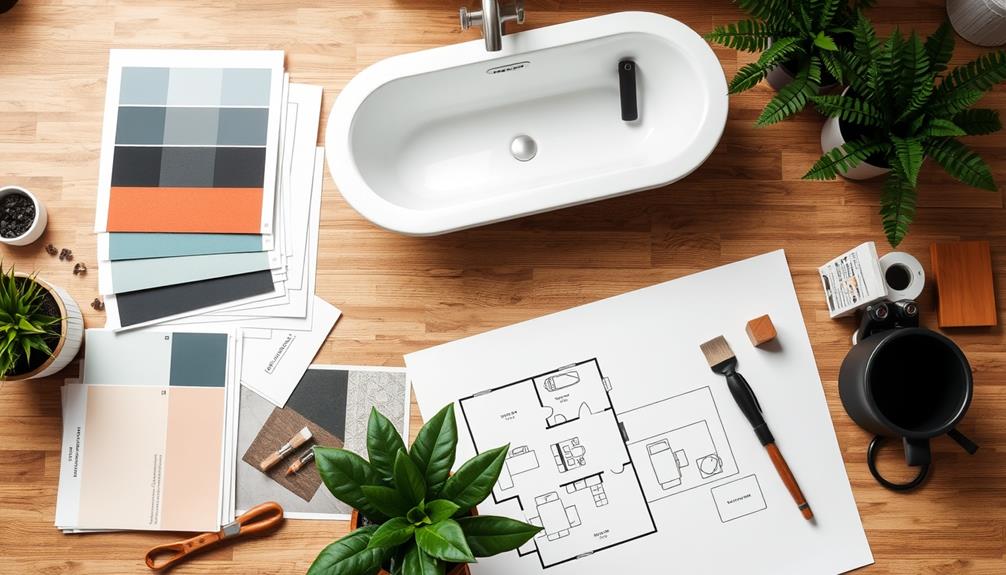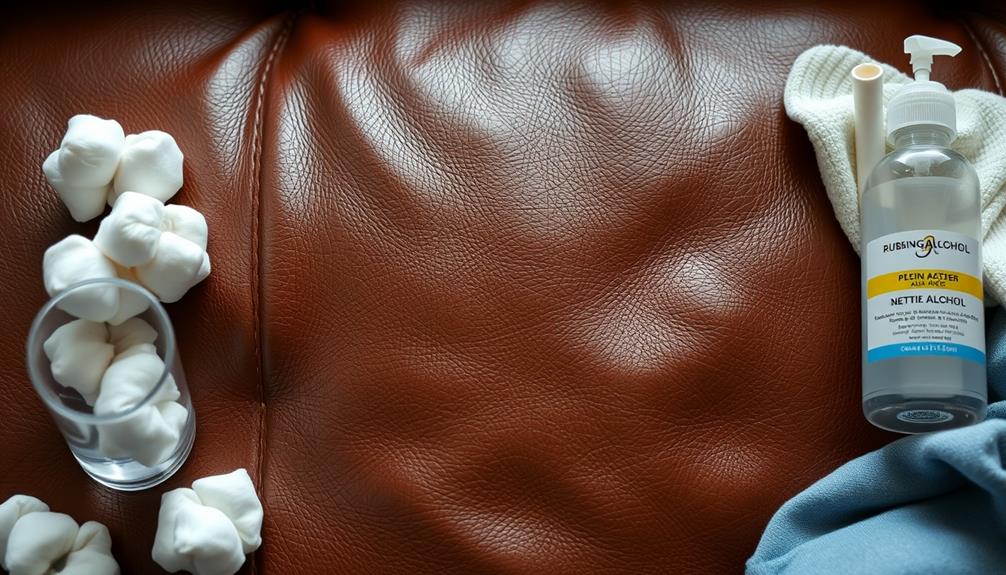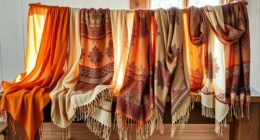To take apart your sofa, start by choosing a shaded area to prevent sun damage. Gather necessary tools like screwdrivers and an Allen wrench. Remove any loose cushions and detachable parts first for easier handling. Check for screws or bolts securing the frame and loosen them carefully. It's important to keep your workspace organized for smooth reassembly. Utilize furniture coasters to protect your floors while moving the sofa. Regularly inspecting joints and connections can help maintain stability. With these steps in mind, you'll be well-prepared for a successful disassembly, and there's plenty more to uncover.
Key Takeaways
- Choose a shaded or indoor area to protect the fabric from sunlight during disassembly.
- Gather essential tools like screwdrivers, Allen wrench, and staple puller for efficient disassembly.
- Remove loose cushions and detachable parts first to keep components organized.
- Use furniture coasters to prevent floor damage while moving the sofa.
- Inspect the frame for any loose joints or damage before reassembling to ensure stability.
Introduction
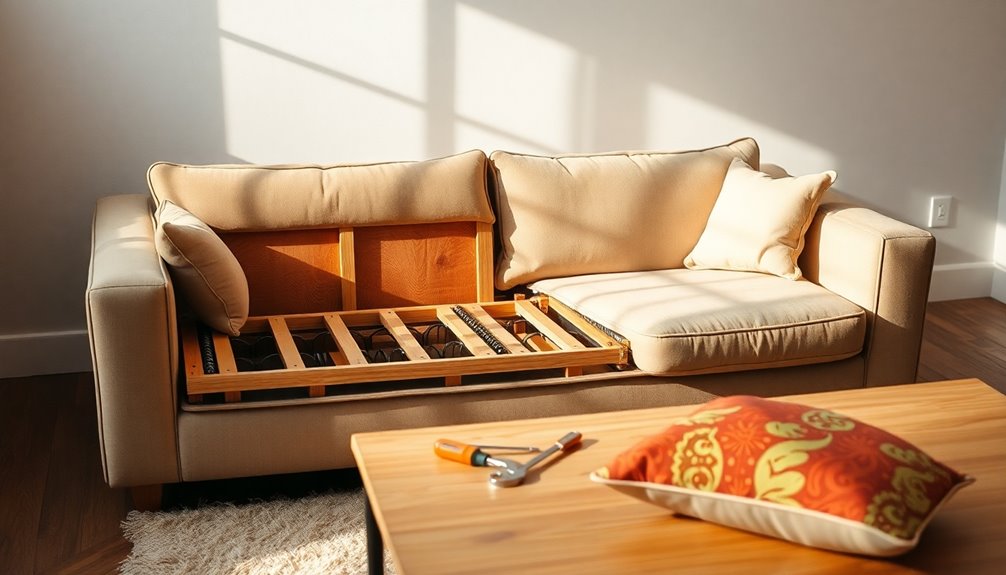
When you take apart a sofa, it's crucial to keep it clean and well-maintained to ensure its longevity. Regular vacuuming and dusting can help prevent dirt buildup, while using fabric-specific cleaning techniques will protect your upholstery. If you spill something like wine, treating it promptly can save you from bigger headaches down the road.
Routine Vacuuming and Dusting
Maintaining a clean sofa is essential for a healthy living environment, and regular vacuuming plays a key role in this process. By vacuuming at least once a week, you can effectively remove dust, allergens, and debris from your upholstery. Using a vacuum cleaner with an upholstery attachment allows you to reach those tricky crevices and seams where dirt tends to accumulate.
Don't forget to pay special attention to areas like under cushions and along the arms, as these spots often collect the most dust and debris. Dusting your sofa with a microfiber cloth also helps prevent grime buildup, preserving the fabric's appearance over time. This simple routine not only keeps your sofa looking fresh but also contributes to a healthier living space by minimizing allergens. Additionally, using a vacuum equipped with a HEPA filter can significantly enhance your cleaning routine by trapping even the smallest particles.
Incorporating both vacuuming and dusting into your cleaning schedule ensures that your sofa remains clean and inviting. By maintaining this routine, you'll avoid dirt settling into the fabric fibers, making it easier to keep your upholstery in top shape. A little extra care goes a long way in prolonging the life of your sofa while enhancing your home's overall cleanliness.
Fabric-Specific Cleaning Techniques
Understanding that different fabrics require specific cleaning techniques is crucial for preserving your sofa's appearance and longevity. When dealing with your couch's upholstery, always check the manufacturer's care label first. It provides essential instructions tailored to your fabric type.
For example, microfiber can be effectively cleaned using a mixture of vinegar and water, while leather needs specialized cleaners to avoid damage. If your fabric is water-safe, consider using a steam cleaner to lift dirt and stains. For delicate materials, a damp cloth with gentle detergent is a safer option that won't cause harm.
Regular vacuuming with an upholstery attachment is key to maintaining cleanliness. This helps you remove dust and debris before they settle into the fibers. If you encounter stains, spot clean immediately with a mild detergent solution to prevent permanent damage. Always test any cleaning solution on an inconspicuous area first to ensure colorfastness. By following these fabric-specific cleaning techniques, you'll help your couch stay looking fresh and extend its lifespan, ensuring you enjoy your investment for years to come. Additionally, it's important to be aware that some household items, like toxic plants, can pose risks to your pets if they come into contact with your furniture.
Treating Wine Spills Promptly
Accidents happen, and wine spills can be particularly challenging for your sofa's upholstery. To prevent the stain from setting, act quickly. Start by blotting the spill gently with a clean, absorbent cloth or paper towel. Remember, don't rub the stain; this can spread the wine and damage the upholstery fibers further.
Next, mix a solution of one part white vinegar, one part dish soap, and two parts water. This mixture is effective for treating the stain without harming the fabric. Before applying it, test the solution on an inconspicuous area of your sofa to ensure it doesn't cause discoloration or damage.
If the stain persists after your efforts, don't hesitate to contact a professional upholstery cleaner. They have the expertise to restore your sofa's fabric effectively, saving you from having to dispose of your sofa or replace old furniture. Timeliness is key in treating wine spills, so remember to act fast to protect your upholstery and keep your living space looking great!
Avoid Direct Sunlight Exposure
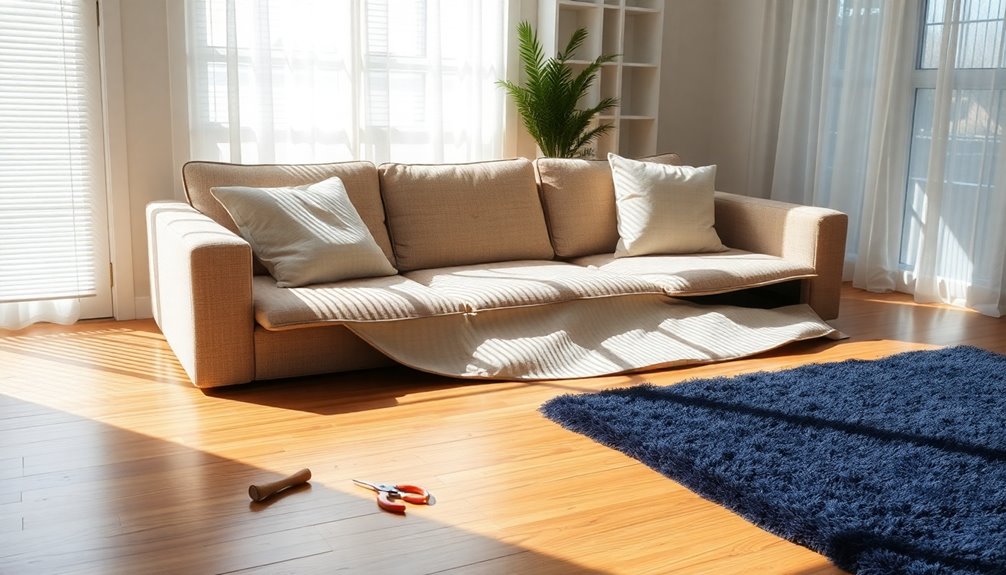
When taking apart your sofa, keep in mind that direct sunlight can seriously damage your upholstery. To protect it, consider using scratch-resistant fabrics or layering decorative fabrics that can act as a barrier. Also, think about using furniture coasters to help prevent any further wear and tear during storage.
Using Scratch-Resistant Fabric
Choosing scratch-resistant fabric for your sofa can significantly enhance its longevity and appearance. This type of fabric is designed to withstand abrasion and wear, making it perfect for high-traffic areas where your sofa may be frequently used. When you take apart a sofa for reupholstering, selecting durable materials can save you time and effort later on.
Look for upholstery that's treated with a protective coating to boost its scratch resistance. Microfiber and treated polyester are excellent options known for their resilience and ease of maintenance. Remember, your scratch-resistant fabric should be regularly cleaned with a soft cloth and mild detergent to preserve its look and prevent dirt buildup.
While you're working on the sofa, be mindful of how the upholstery is fastened. If you're removing the staples, do so carefully to avoid damaging the fabric. Also, keep in mind that even the best scratch-resistant fabric can fade under direct sunlight. To maintain its integrity, avoid exposing your sofa to prolonged UV light. By following these tips, you'll ensure your sofa remains beautiful and functional for years to come.
Employ Decorative Fabric Layers
To keep your sofa's upholstery looking fresh and vibrant, employing decorative fabric layers can be a game changer. By blocking UV rays, these layers help prevent direct sunlight exposure, which can lead to fading. When selecting fabrics, consider those with a high UV resistance rating; they'll endure prolonged sunlight without significant color loss.
Layering drapes or sheer curtains can diffuse sunlight while still allowing natural light into the room, creating a cozy atmosphere. Remember to regularly rotate these decorative fabric layers to minimize wear on any single section of your upholstery or cushions. When choosing fabrics, opt for lighter colors, as they tend to reflect heat rather than absorb it, further protecting your sofa from sun damage.
Incorporating natural materials like cotton or linen in your fabric choices can enhance both durability and aesthetic appeal. If you ever decide to take apart a couch for repairs or updates, keeping these fabric layers in mind can preserve your investment. And if the time comes for furniture disposal, consider taking your upholstery to a local recycling center instead of throwing it away. With proper care and attention, your sofa can stay beautiful and functional for years to come.
Using Furniture Coasters
Using furniture coasters under your sofa's legs is a smart move to protect both your flooring and the furniture itself during disassembly. These coasters not only make it easier to slide the sofa around your workspace but also prevent scratches and dents on your floors. When you're taking apart your sofa, it's crucial to keep everything in good condition, and coasters are a simple solution to help you achieve this.
Additionally, while you're disassembling, avoid exposing the sofa to direct sunlight. Sunlight can cause fading and damage to the upholstery, which you definitely want to prevent. If your sofa has been in a sunny spot, try to work in a shaded area or indoors. This way, you can protect the fabric from any potential damage.
Remember to keep any components you remove from the sofa away from sunlight as well. This will help maintain their condition and prevent warping or discoloration. By using coasters and protecting your sofa from sunlight, you'll ensure a smoother disassembly process while prolonging the life of your furniture.
Routine Frame Inspections
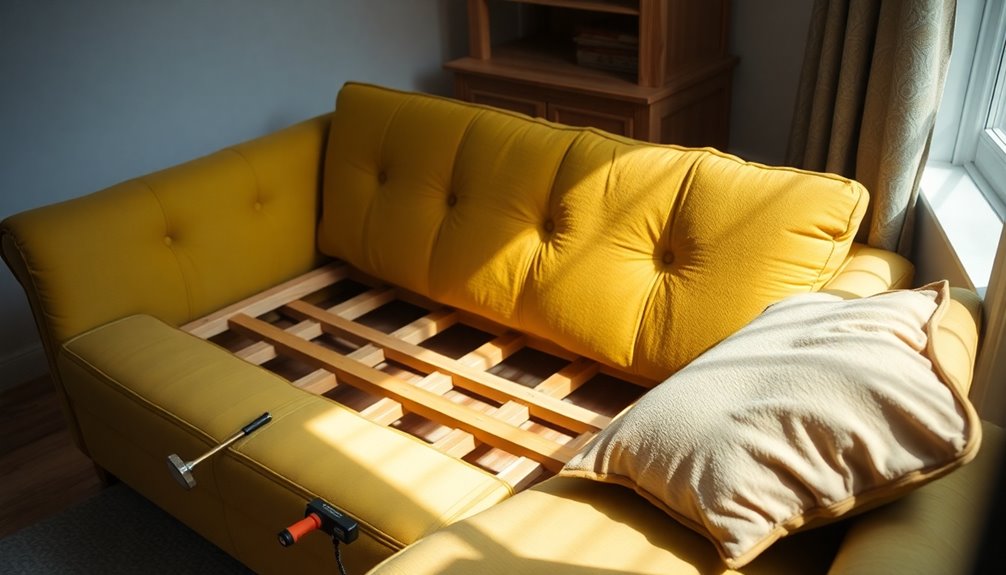
When you're inspecting your sofa frame, pay close attention to loose joints and connections, as they can lead to instability. Noticing any wear and tear might also inspire you to consider reupholstering for a fresh look. Keeping your sofa in good shape not only enhances its appeal but also ensures it remains a comfortable spot in your home.
Loose Joints and Connections
Regular inspections help catch loose joints and connections in your sofa before they become bigger problems. By routinely checking the sofa frame, you can identify any areas that might need attention. Focus on the connections where the arms, back, and seat meet, as these spots often endure the most stress and are prone to loosening over time.
During your routine inspections, grab a screwdriver and tighten any visible screws or bolts you find. This simple step can significantly enhance the integrity of your sofa's structure. If you notice any wooden joints separating, consider applying wood glue to reinforce the connections. This will help prolong the life of your sofa and maintain its comfort.
Make it a habit to schedule these inspections at least every six months. This proactive approach ensures that you catch potential issues early, avoiding costly repairs down the line. Remember, taking a few minutes to inspect your sofa can save you from dealing with unstable seating or even complete frame failure later. Keep your sofa comfortable and sturdy by staying on top of those loose joints and connections!
Reupholstering for a Fresh Look
A thorough inspection of your sofa's frame is crucial for achieving a fresh look during reupholstering. Start by removing the legs to get a clear view of the sofa frame. Look for any signs of wear, such as loose joints, cracks, or sagging. These issues can compromise comfort and the overall integrity of your reupholstered piece. Use a staple puller to remove old fabric and assess the springs; if they're sagging, consider replacing them.
Check for corrosion or damage to metal fasteners. If you find any rusted or broken ones, replace them to ensure a sturdy foundation for your new upholstery. After addressing these concerns, use a level to assess the evenness of the sofa frame. Making any necessary adjustments now will prevent wobbling later.
It's also smart to document any repairs or modifications you make during this process. Keeping track of these adjustments will help you maintain the sofa and inform future refurbishments. By completing these steps, you'll enhance your sofa's lifespan and ensure it's ready for a beautiful new look. Additionally, incorporating natural elements into your decor can enhance the overall ambiance of your refreshed space.
Revitalizing Your Sofa's Appeal
Maintaining your sofa's appeal hinges on routine frame inspections that catch issues before they escalate. Every six months, take the time to inspect your sofa frame for signs of wear or damage, like loose joints or cracks. These inspections help ensure your couch remains in good condition and prolong its lifespan.
During your checks, tighten any screws and bolts to prevent wobbling or instability. If you notice sagging or misalignment, address these problems promptly to avoid further damage. You might even consider applying wood glue to joints that show separation; this simple step can reinforce the frame's strength and enhance its longevity.
If you're thinking about taking apart a couch for a deeper inspection, remember to keep an eye out for waste removal. Don't let debris accumulate as it can lead to additional strain on the frame. By staying proactive with your routine inspections, you'll ensure that your sofa not only looks great but also provides a safe and comfortable seating experience for years to come. Consistency is key, so make those inspections a regular part of your home maintenance routine!
Personalized Cushion Designs
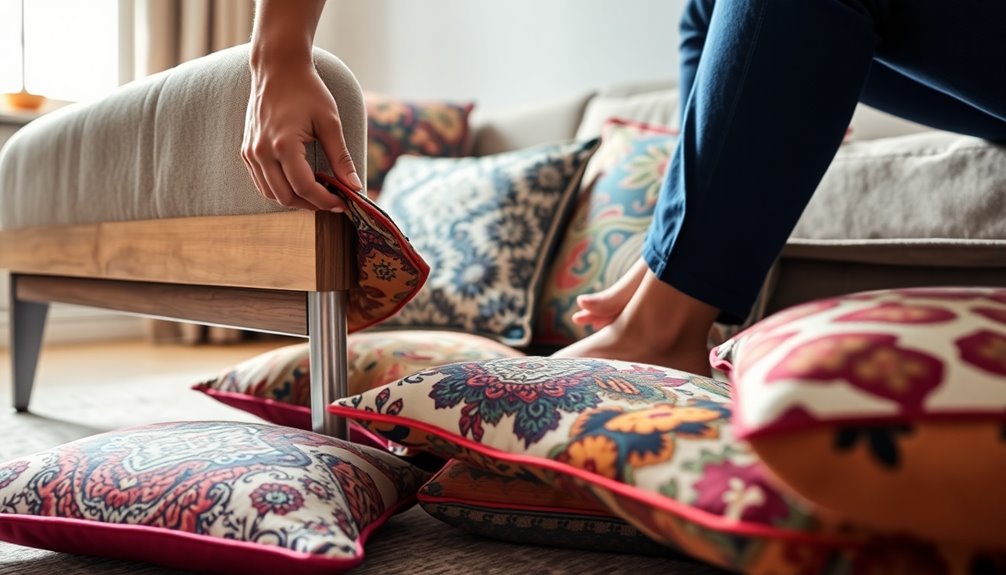
When it comes to personalizing your sofa, cushion designs offer a fantastic way to showcase your unique style and preferences. You can enhance the aesthetic appeal of your living space by choosing custom cushions made from high-quality fabrics, colors, and patterns that reflect your taste. By opting for personalized cushions, you ensure that every piece complements your interior design.
One of the best aspects of custom cushions is the ability to tailor them to specific dimensions. This means you can achieve a perfect fit for any sofa, especially those unique or vintage designs that don't accommodate standard sizes. Adding embellishments like piping, tufting, or embroidered designs can elevate their visual impact, creating a striking focal point in your room.
Moreover, personalizing your cushions can also enhance practicality. You can incorporate functional elements, like removable covers for easy cleaning or varying thicknesses for different seating preferences. This way, your custom cushions not only look great but also provide comfort and convenience, making them a worthwhile investment for your living space. Embrace the opportunity to express yourself through personalized cushion designs that truly make your sofa your own.
Seasonal Fabric Rotation Tips
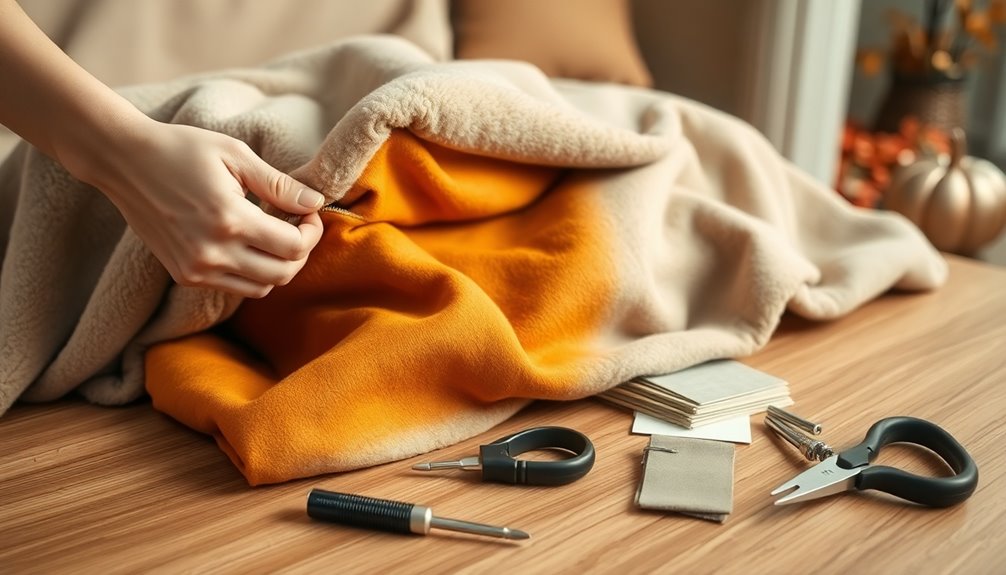
Seasonal fabric rotation keeps your sofa looking fresh and can significantly extend the life of your upholstery. To get the best results, aim to rotate your fabrics every six months. This practice minimizes wear and ensures even fading, maintaining the vibrant look of your furniture. Consider using slipcovers, as they can be easily removed and washed, allowing you to switch up styles and colors with each season effortlessly.
Before you rotate your fabrics, inspect and clean your upholstery to prevent any dirt or stains from transferring to your seasonal covers. After cleaning, store your off-season slipcovers in a cool, dry place to protect them from moisture damage and preserve their integrity until you need them again.
To further extend the life of your seasonal upholstery, apply fabric protectants to guard against stains and fading caused by sunlight exposure. By taking these steps, you'll not only refresh your living space but also ensure your sofa remains in excellent condition for years to come. Remember, regular maintenance and thoughtful rotation are key to keeping your sofa inviting and stylish throughout the seasons.
Conclusion
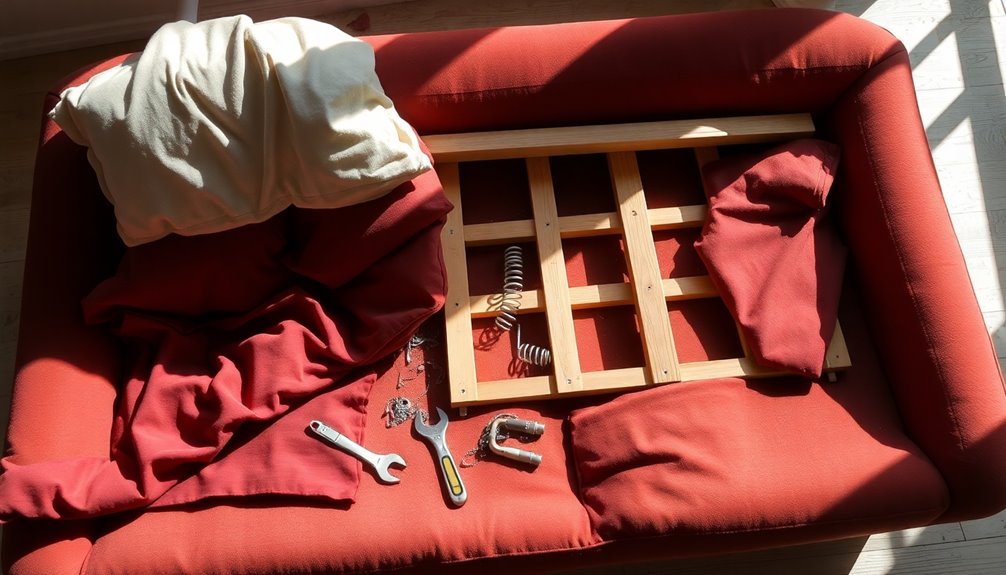
Taking apart a sofa can seem daunting, but with proper planning and the right tools, you can tackle the task efficiently. Start by gathering essential tools like screwdrivers, an Allen wrench, and a staple puller. It's best to remove all loose cushions and any detachable parts first, then systematically inspect and remove fasteners to keep everything organized for reassembly.
As you work, don't forget that upholstery removal might be necessary to access the internal components of the sofa frame. This process typically takes about 4 to 6 hours, depending on your sofa's complexity and how many people are helping you.
Frequently Asked Questions
Is There a Way to Take Apart a Couch?
Yes, there's definitely a way to take apart a couch. Start by removing any loose cushions and detachable parts like legs or armrests. Check the frame for screws or bolts and take them out systematically, keeping everything organized in labeled bags. If your couch has upholstery, carefully detach it with a staple puller or box cutter. Always wear gloves and eye protection to stay safe while you're working with tools and materials.
How Do I Take My Sofa Apart for Moving?
To take your sofa apart for moving, start by removing all loose cushions and any detachable parts like legs or armrests. Use a screwdriver and Allen wrench to unscrew the fasteners, keeping them organized for reassembly. If your sofa has a bed feature, detach the mattress and unscrew the hinges. Carefully remove the upholstery with a staple puller, then wrap each piece in protective materials to ensure they stay safe during transport. After securing the individual components, label each wrapped piece to simplify reassembly at your new location. Also, be sure to take inventory of all parts to avoid losing anything during the move. Understanding how to prepare a sofa for moving can make the process smoother and help prevent damage, ensuring your sofa arrives in excellent condition.
Can You Dismantle a Sofa to Fit Through a Door?
Yes, you can dismantle a sofa to fit through a door. Start by measuring both the sofa and the door to ensure a proper fit. Remove detachable components like cushions, armrests, and legs. You'll need tools like a screwdriver and an Allen wrench to access and remove fasteners. It's best to have someone help you maneuver the parts through tight spaces, ensuring you avoid any damage during the process.
Do the Backs of Couches Come Apart?
Yes, the backs of couches often come apart, making it easier to transport or rearrange your space. You'll typically find screws, hinges, or other mechanisms holding the back in place. Grab a screwdriver or Allen wrench and check for any hidden fasteners. If your couch is a sofa bed, remove the mattress first. Always refer to the manufacturer's guidelines, as methods can vary based on the design of your couch.
